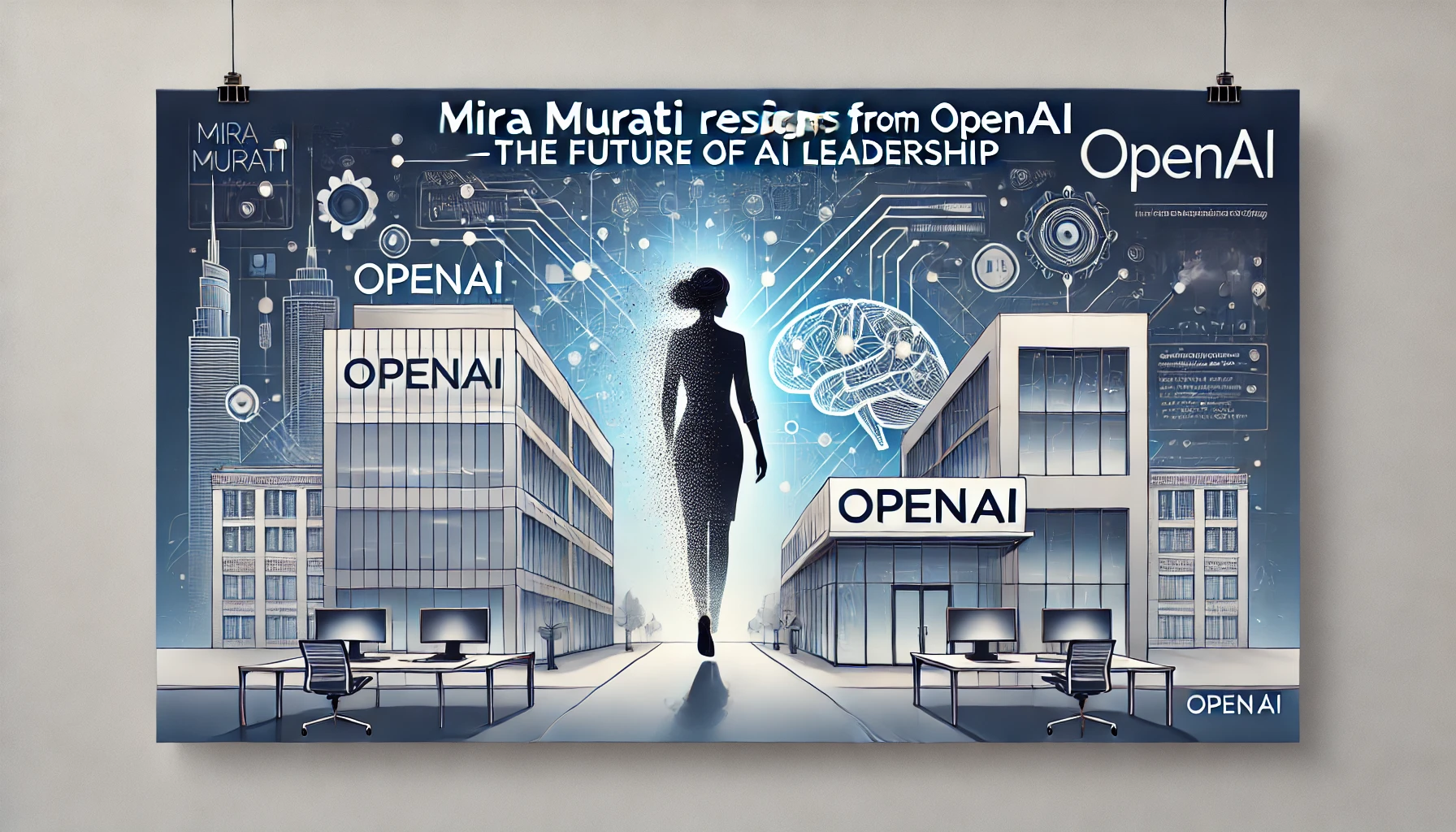Why Did Mira Murati Resign from OpenAI? Exploring the Reasons and Her Future in AI
In the ever-evolving world of artificial intelligence, few companies have shaped the industry as significantly as OpenAI. However, when news broke of Mira Murati’s resignation as Chief Technology Officer (CTO) in 2024, it sent ripples throughout the tech community. As one of the leading figures behind OpenAI’s leadership change, Murati’s departure raised many questions about her reasons for leaving and the potential future trajectory of both her career and OpenAI.
This article delves into why Mira Murati left OpenAI, exploring the circumstances around her resignation, what this means for the future of AI, and the company’s broader executive shakeup. Additionally, we’ll discuss Murati’s potential next steps in the AI world and how this leadership transition could impact the technology landscape.
Who is Mira Murati?
Before delving into the specifics of her resignation, it’s crucial to understand Mira Murati‘s role at OpenAI and her contributions to the company. A graduate of Dartmouth College with a background in mechanical engineering, Murati joined OpenAI in 2018. She quickly became a key player in the development of GPT-3 and ChatGPT, two of the most influential AI models that have reshaped how businesses and individuals interact with artificial intelligence.
Murati was OpenAI’s CTO during a transformative period for the company, overseeing technological advancements that attracted global attention. However, despite her significant contributions, her resignation in 2024 has left many wondering what motivated this pivotal decision.
Understanding the OpenAI Executive Shakeup
Murati’s exit from OpenAI is part of a broader executive shakeup that has unfolded over the past few years. This isn’t the first high-profile departure from the company. In fact, OpenAI has seen multiple key executives leave, including Greg Brockman and Ilya Sutskever. The rapid turnover has sparked concerns about the stability of leadership at one of the most influential AI companies in the world.
According to sources familiar with the company, OpenAI’s leadership change stems from various factors, including internal conflicts over the company’s direction, financial pressures, and the challenges of maintaining the delicate balance between AI development and ethical responsibility. The mounting pressure could have influenced Mira Murati’s decision to leave, along with other executives.
Why Did Mira Murati Leave OpenAI?
The exact reasons for why Mira Murati left OpenAI remain speculative, but some clear themes have emerged. In a statement following her resignation, Murati emphasized the need for personal exploration and growth, stating, “I’m stepping away because I want to create the time and space to do my own exploration.” This suggests that her departure was a deeply personal decision rather than one driven purely by company politics.
However, the timing of her resignation, especially amid ongoing OpenAI controversies, raises questions about potential internal disagreements. OpenAI has faced mounting criticism over the commercial rollout of its AI models, and the ethical dilemmas of releasing such powerful tools to the public. Murati has long advocated for responsible AI development, which might have clashed with some of OpenAI’s more aggressive strategies.
Furthermore, OpenAI’s intense environment could have played a role. Over the years, the company has experienced rapid growth, heightened competition, and financial pressures. Balancing the immense demands of pushing the boundaries of AI innovation while maintaining a focus on ethics is no small feat, and it could explain why Mira Murati resigned at such a pivotal moment.
What is Next for Mira Murati?
One of the most pressing questions following her resignation is, “What is next for Mira Murati?” Her statement indicates a desire for personal growth and exploration, but what form that will take remains unclear. Industry experts believe she might explore new AI ventures or even start her own AI-focused company.
Given her experience and achievements at OpenAI, Murati is well-positioned to shape the next phase of AI development. Her track record with technologies like GPT-3 and ChatGPT demonstrates her ability to push boundaries. We might see her joining forces with another AI giant or even developing new innovations from scratch. In any case, the AI world will be watching closely to see what her next move will be.
How Does Mira Murati’s Exit Impact OpenAI?
Mira Murati’s resignation has undoubtedly left a void at OpenAI, and the company will need to navigate this leadership transition carefully. Murati’s departure, coupled with other high-profile exits, has raised concerns about the long-term stability of OpenAI’s leadership.
Moreover, OpenAI has been grappling with numerous controversies, ranging from ethical concerns to debates around the commercial use of its models. Murati was one of the more vocal advocates for responsible AI development within the company, and her exit may indicate a shift in OpenAI’s priorities.
Internally, employees have expressed their concerns regarding the ongoing executive shakeup. Some view the exodus of key figures like Murati as a signal of larger underlying problems within OpenAI. Externally, the AI industry remains divided—some believe that the departure of executives like Murati could lead to more dynamic leadership, while others fear it could destabilize the company’s future.
In the long term, OpenAI’s success will depend on its ability to retain top talent and maintain a balanced approach between technological advancement and ethical responsibility.
The Broader Implications of OpenAI’s Leadership Crisis
The OpenAI executive departures also have significant implications for the broader AI industry. OpenAI has set the standard for artificial intelligence development, but with so many leadership changes, there is concern about how this will impact its ability to innovate. As competitors like Google DeepMind and Meta continue to make strides in AI, OpenAI needs strong, visionary leadership to stay ahead.
Furthermore, with the departure of key figures like Murati, OpenAI may face challenges in retaining investor confidence. The company has long been heralded as a leader in AI, but continuous internal strife could lead to hesitation among investors, especially given the heavy financial pressures the company faces.
Navigating the Future of AI
Mira Murati’s resignation marks a turning point not just for OpenAI but for the entire AI industry. Her departure leaves questions about the future of OpenAI, but it also opens the door to new opportunities for her to shape the next era of AI innovation. As we reflect on why Mira Murati left OpenAI, it’s clear that her decision was driven by a mix of personal and professional factors, underscored by the intense pressure of leading one of the world’s most influential AI companies.
As we look to the future, Murati’s exit may pave the way for new leaders at OpenAI, but it also raises important questions about the company’s stability. How the company handles this executive shakeup will be crucial for its long-term success.
If you want to stay updated on the latest developments in AI leadership and technology, visit Regent Studies for insightful articles and in-depth analysis.
For more details on OpenAI controversies and the broader impact of AI on society, you can explore this reputable article from Wired.



